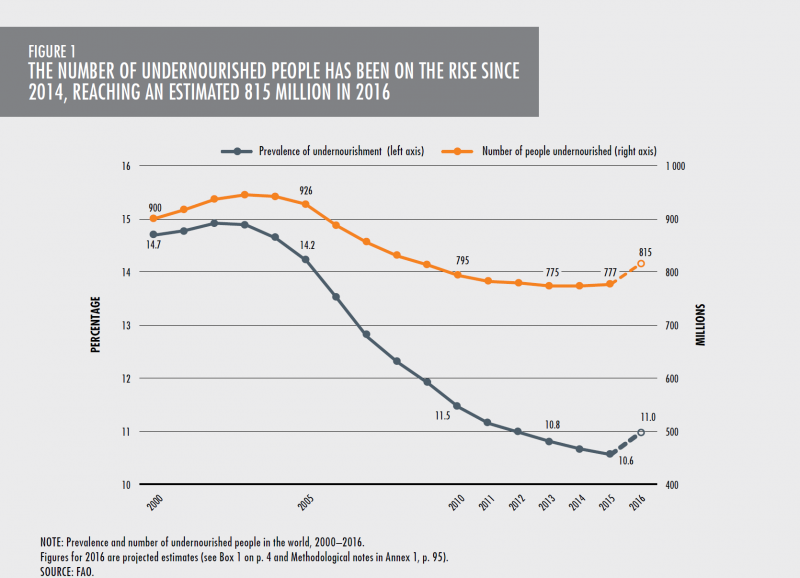Global food security/GFS101/Thinking Through Food Security/Hunger
Hunger
Hunger is one important issue/problem of food security. Hunger can be a satisfying feeling when you know that you going to be fed but what if you did not know when your next meal would be not just in terms of one day but months or years. Here hunger is thought of as the absolute deprivation of people. People who are imprisoned by a lack of a vital need. People who are oppressed and can't ensure their own wellbeing. People who will die young. People whose children will be born fundamentally weak and unwell. The same word is often used to cover these different experiences. In this sense, hunger or 'Global Hunger' is used as a substitute word for chronic undernutrition. So what is Malnutrition then?
The term malnutrition describes both undernutrition and conditions such as being overweight, obesity and diet-related non-communicable diseases including heart disease, diabetes, and cancer. It helps highlight how a person can still get enough energy from food (measured in calorie intake) but still lack vital proteins and nutrients for optimum health and or has a condition that prevents proper digestion or absorption of food.
Chronic undernutrition can be defined in terms of either a protein-energy deficit or a micro-nutrient deficit (often termed 'hidden hunger') or both. Chronic undernutrition usually is associated with deep poverty, natural disasters, and conflict. What this implies is that hunger in terms of choric undernutrition is not a choice but something that is imposed in some way upon people. Global hunger can be measured in broadly two different ways: quantitative determination or qualitative determination or a combination of both. The former takes into account measures such as clinical assessment of symptoms as loss of pigment in hair, critical vitamin and or mineral deficiency, biochemical assessment of blood and urine, and anthropometric assessment such as stunting (low height relative to age), wasting (low weight relative to height), and underweight (low weight relative to age) Qualitative measures include surveying dietary habits and the subjective experience of feeling hungry. It is worth remembering exactly how complex a task it is to piece together a picture of Global Hunger. It is particularly hard in areas such as the Global South where there is often poor government infrastructure like roads and hospitals, and or where there may be conflict. This means that a whole bunch of estimates, assumptions and complex handling of data goes on in the background to create a picture of global hunger. For further information on how global hunger can be measured follow this link In the next lecture, Aidan provides the definition of chronic undernutrition used by the United Nations and discusses its changing prevalence in recent years.


